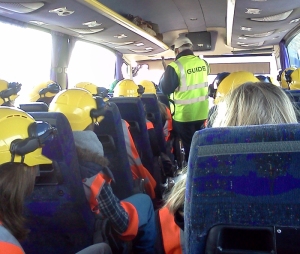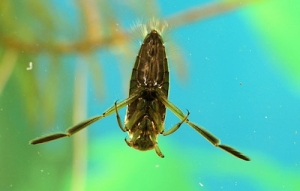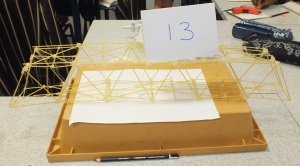On 7th February 48 students from Year 11, (accompanied by Mr Bilton, Miss Vine, Mr Pimentao and Miss Gilleece) travelled to Essex to visit the npower-operated Tilbury Power Station. The students study the generation of electricity as part of their course, so this was an excellent opportunity to see where it all happens. The Tilbury site was originally a coal-fired power station, but this year it switched to using biomass as the fuel source, as part of a programme to be ‘greener’ and depend on renewable sources.

Tilbury Power Station
The biomass used at Tilbury is wood pellets, produced from the sawdust and waste of the Canadian lumber industry, so it’s a good use of a material that would otherwise just be wasted. It also has less impact in terms of CO2 production than coal, because it’s not burning carbon that’s been locked away for millions of years.
Properly kitted out in hard-hats, ear defenders and high-visibility jackets the students were taken on a tour of the power station, at one point standing inside a 65m furnace which reaches temperatures of 1500ºC (luckily for the students it wasn’t on at the time…). The scale of the facility is hard to imagine, but it gives you an appreciation of engineering behind the process.

Safety first - hard-hats and ear defenders!
The process of electrical generation is actually remarkable simple. When the biomass arrives it is crushed and then blasted into the furnace where it burns. The furnace is lined with pipes that contain ultra-pure water. As this water heats up it turns to steam. This high-pressure steam is used to turn turbines (converting heat energy into kinetic energy), and the turbines rotate an electro-magnet within a coil of wire. The movement of a magnet within a coil of wire creates the electrical current (thanks Faraday!) and that’s all there is to it.

Generating electricity - what's happening inside?
The students were also able to study some of the chemistry and biology surrounding the issue of power generation. Using conductivity meters the students recorded how many dissolved ions and minerals were in drinking and filtered water. They then compared it to water that had been through an ion-exchamge resin and were surprised to see that there were no ions left at all. This super-pure water (which actually tasted a little bland) has to be used in the power station to prevent damage to the pipes (picture the inside of your kettle..). The students then had a look at the local water quality by pond-dipping and looking for indicator species; species that tell you how clean the water is by their presence or absence. Having found a variety of insects including Common Backswimmers, Damselfy nymphs and Diving Beetles (and even some fish) everyone was surprised to conclude the water so near a power station was actually good quality and supported a diverse community.

Damselfly nymph - this larval form indicates good water quality

Common Backswimmer - this insect swims upside down
The students had a really good time and certainly learned lots about where their electricity comes from and how best to manage our energy resources so that we can live in a sustainable and ecologically-sensitive way. Many thanks too to the staff at the power station for giving us such an enjoyable day!








